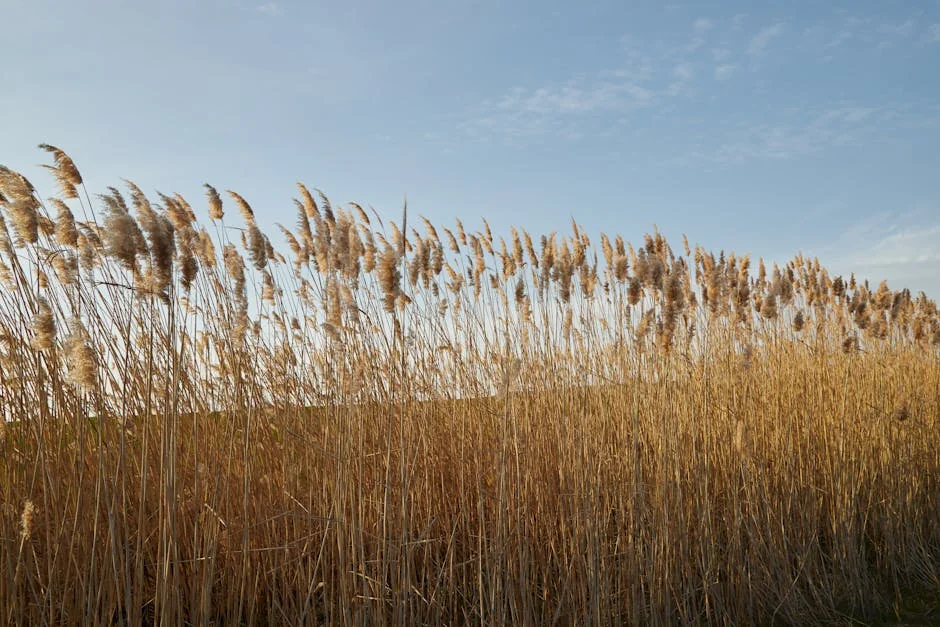You’ve asked the question, “what’s the best way to meditate,” and the honest answer might surprise you. There isn't one single "best" method that works for everyone. The most effective meditation practice is deeply personal—it’s the one that resonates with your unique mind, fits into your lifestyle, and addresses your specific goals, whether that's calming anxiety, improving focus, or simply finding a moment of peace.
Trying to find that perfect fit can feel overwhelming with so many techniques available. But that’s exactly why we’ve created this guide. Think of it as your personal roadmap to explore the most popular and powerful meditation styles. We’ll walk you through everything from foundational mindfulness to compassionate loving-kindness practices, helping you move from theory to a sustainable routine. Let’s discover your best way to meditate together.
Understanding Your "Why": The Foundation for Finding Your Best Meditation Practice
Before we dive into specific techniques, let's pause for a moment. The first step to finding the best way to meditate for you is to understand your intention. Your "why" acts as a compass, guiding you toward the practices that will be most beneficial and rewarding.
Are you looking to:
- Quiet an anxious mind? If your primary goal is to reduce stress and calm racing thoughts, techniques that anchor you in the present moment are ideal. A great starting point is this guide on meditation to clear the mind.
- Sharpen your focus? For improving concentration at work or in your studies, practices that train your attention are incredibly effective.
- Cultivate self-compassion and empathy? If you want to improve your relationship with yourself and others, heart-centered meditations are the way to go.
- Improve your sleep? For those struggling with insomnia or restless nights, relaxation-focused techniques can signal to your body that it's time to unwind.
There are no right or wrong answers here. Taking a moment to identify your primary intention will make the next section far more useful, as you can explore the techniques that directly align with your personal goals.
A Beginner's Blueprint: Mastering the Fundamentals of Meditation
No matter which path you choose, all meditation styles share a common foundation. Mastering these basics is the key to learning how to meditate properly and building a sustainable habit.
Here is a simple, universal blueprint to get you started:
Find Your Posture: You don't need to twist into a lotus position. Sit comfortably in a chair with your feet flat on the floor, or cross-legged on a cushion. The key is to keep your back relatively straight, but not rigid, allowing for a natural, easy breath. You can also lie down if sitting is uncomfortable, though be mindful of falling asleep. For a deeper dive, explore our article on the best pose to meditate.
Set a Time Limit: When starting out, less is more. Begin with just 5 to 10 minutes per day. Consistency with a short practice is far more powerful than an hour of meditation once a month. Wondering when to do it? Check out our thoughts on the best time to meditate.
Focus on Your Breath: Bring your attention to the physical sensation of your breathing. Notice the air moving in and out of your nostrils, or the rise and fall of your chest or abdomen. There's no need to control it; just observe it naturally.
Notice When Your Mind Wanders: It’s not a matter of if your mind will wander, but when. Your brain is built to think. The moment you realize you’ve been lost in thought—whether it's about your grocery list or a work project—is the magic moment of meditation. Gently acknowledge the thought without judgment, and softly guide your attention back to your breath.
This cycle of focusing, wandering, noticing, and returning is the practice. It’s a rep for your brain, strengthening your ability to focus and choose where you direct your attention.
Exploring Popular Techniques: Finding the Best Way to Meditate for You
With the fundamentals in place, you're ready to explore. This is where you can experiment to find which of the best meditation techniques feels most natural for you.
Mindfulness Meditation (Present-Moment Awareness)
This is one of the most popular forms of meditation in the West. The goal is to simply be aware of your experience in the present moment without judgment.
- How to Practice: After settling into your posture, broaden your awareness beyond just the breath. Notice sounds, physical sensations, and even thoughts as they arise. Observe them as if they were clouds passing in the sky—coming and going without getting caught up in them. Your anchor is the entire field of your present-moment experience.
- Best For: Reducing stress and anxiety, increasing emotional regulation, and cultivating a general sense of awareness in daily life.
Focused Attention Meditation (Using a Mantra or Object)
This technique hones your concentration by focusing on a single point. This could be your breath, a visual object like a candle flame, or a mantra—a word or phrase you repeat silently.
- How to Practice: Choose your point of focus. If using a mantra, you can use a traditional Sanskrit word like "So Hum" (meaning "I am") or a simple English word like "peace" or "calm." Silently repeat the mantra with each breath cycle. When your mind wanders, gently return to the repetition.
- Best For: Improving concentration, calming a busy mind, and developing a deep sense of inner stillness.
Loving-Kindness Meditation (Cultivating Compassion)
Also known as Metta meditation, this practice is designed to foster a sense of unconditional kindness and compassion towards yourself and others.
- How to Practice: Begin by focusing on your heart center and silently repeating a series of phrases directed at yourself: "May I be happy. May I be healthy. May I be safe. May I live with ease." After a few minutes, gradually extend these wishes to a loved one, a neutral person, a difficult person, and finally, to all beings everywhere.
- Best For: Reducing self-criticism, increasing empathy, healing relationships, and combating feelings of anger or isolation.
Body Scan Meditation (Connecting with Physical Sensations)
This practice involves systematically moving your attention through different parts of your body, often from your toes to the top of your head.
- How to Practice: Lie down on your back in a comfortable position. Bring your awareness to the toes of your left foot. Notice any sensations there—tingling, warmth, pressure, or even nothing at all. After a few moments, consciously release that area and move your attention to the sole of your foot, then your heel, and so on, slowly moving up your entire body.
- Best For: Releasing physical tension, combating insomnia, and deepening the connection between your mind and body.
Walking Meditation (Meditation in Motion)
If sitting still makes you restless, walking meditation is a perfect alternative. It turns a simple activity into a profound practice of mindfulness.
- How to Practice: Find a quiet path where you can walk 10-20 paces back and forth. Walk slowly and deliberately. Focus all your attention on the physical experience of walking: the sensation of your feet lifting, moving through the air, and making contact with the ground. When your mind wanders, gently bring it back to the sensations in your feet and legs.
- Best For: Those who find sitting meditation challenging, integrating mindfulness into daily movement, and connecting with the environment.
Common Meditation Challenges and How to Overcome Them
Every meditator, from beginner to expert, encounters hurdles. Anticipating these challenges can help you navigate them with grace and keep your practice on track.
"I can't stop my thoughts." This is the most common concern. Please remember: the goal of meditation is not to stop your thoughts. The goal is to become more aware of them and to learn not to be controlled by them. Every time you notice your mind has wandered and you gently bring it back, you are succeeding at meditation.
"I get too restless or impatient." Restlessness is a normal sensation, especially when you first start. Instead of fighting it, try to get curious about the feeling of impatience itself. Where do you feel it in your body? What is its texture? Often, simply observing it with curiosity causes it to lose its power. Alternatively, try a moving practice like walking meditation.
"I fall asleep." If you're meditating while sleep-deprived, your body will understandably take the opportunity to rest. Try meditating at a different time of day when you're more alert, or experiment with meditating with your eyes slightly open or in an upright seated position rather than lying down.
"I don't have time." This is often a matter of reframing. You can start with just one minute. Link your practice to an existing habit—like after you brush your teeth in the morning or right before you eat lunch. Consistency with a "one-minute meditation" is far more valuable than an ambitious goal you can't maintain.
The journey to finding your best way to meditate is one of exploration and self-discovery. It’s less about achieving a state of perfect silence and more about learning the landscape of your own mind. Be patient and kind with yourself as you experiment with these different techniques. The perfect practice is not the one that is most famous or seems the most spiritual; it is the one that you will actually look forward to doing each day. That is the true secret to a lifelong, transformative meditation practice.
Ultimately, the best way to meditate is the method you will practice consistently. This exploration reveals that there is no single superior path; the ideal technique is the one that resonates with your personal needs and lifestyle. Whether you seek the focused attention of mindfulness, the expansive warmth of loving-kindness, or the grounding rhythm of a walking meditation, each practice offers a unique gateway to greater awareness and inner calm. The core of success lies not in perfection, but in the simple, repeated act of returning to the present moment. Do not be discouraged by a wandering mind or initial restlessness, as these are natural parts of the process. Let this be your invitation to move from contemplation to practice. Commit to just a few minutes each day, explore different styles with curiosity, and discover the profound impact that a dedicated meditation habit can have on your clarity, resilience, and overall well-being. Your journey toward a more centered life begins with a single, mindful breath.



